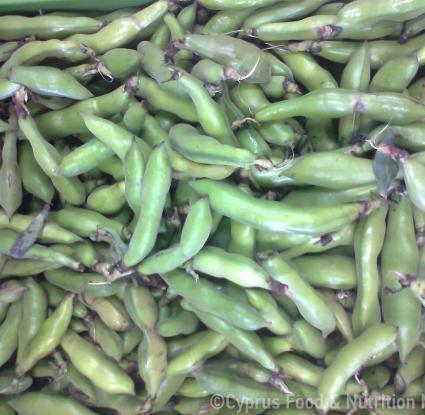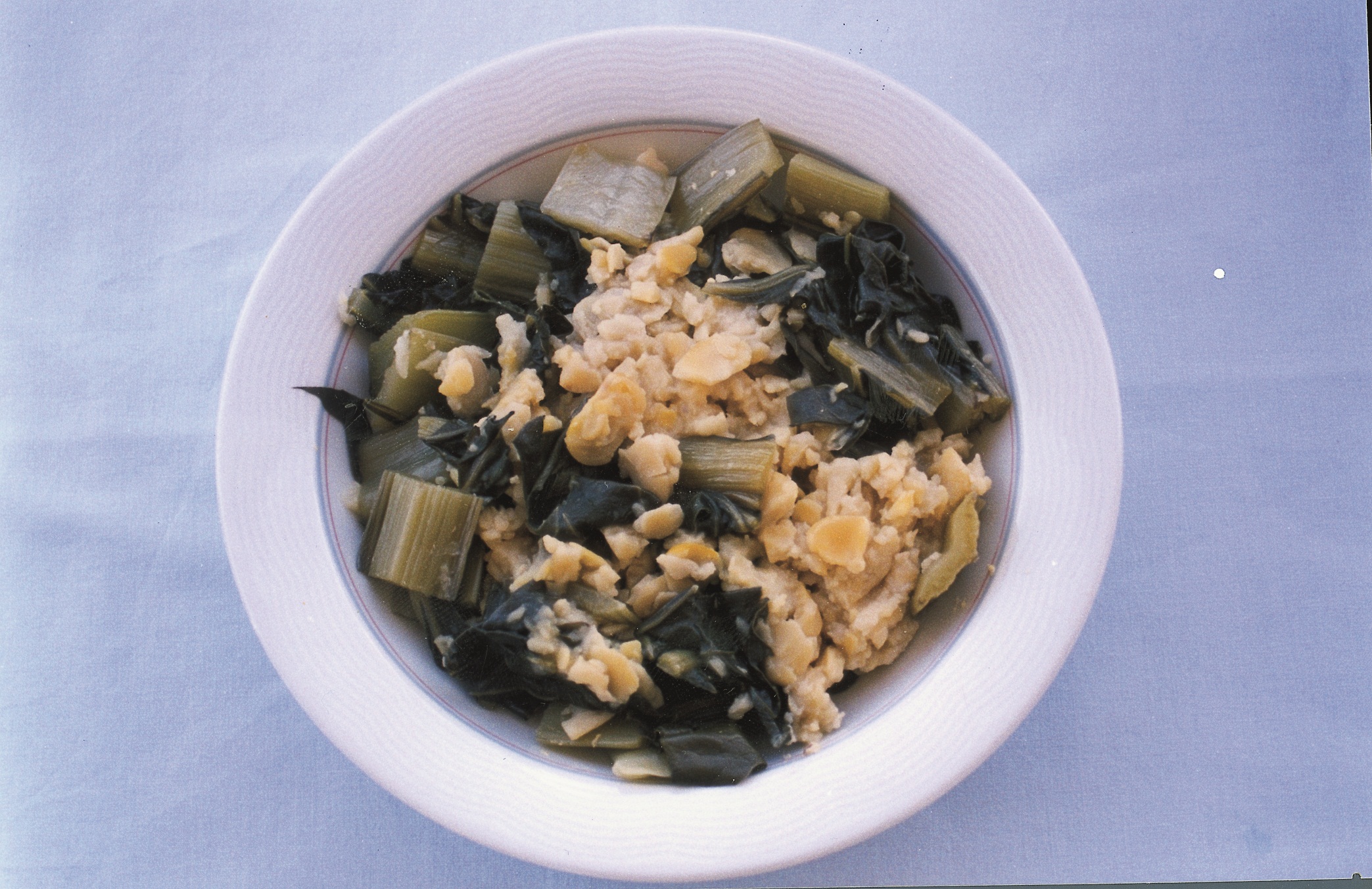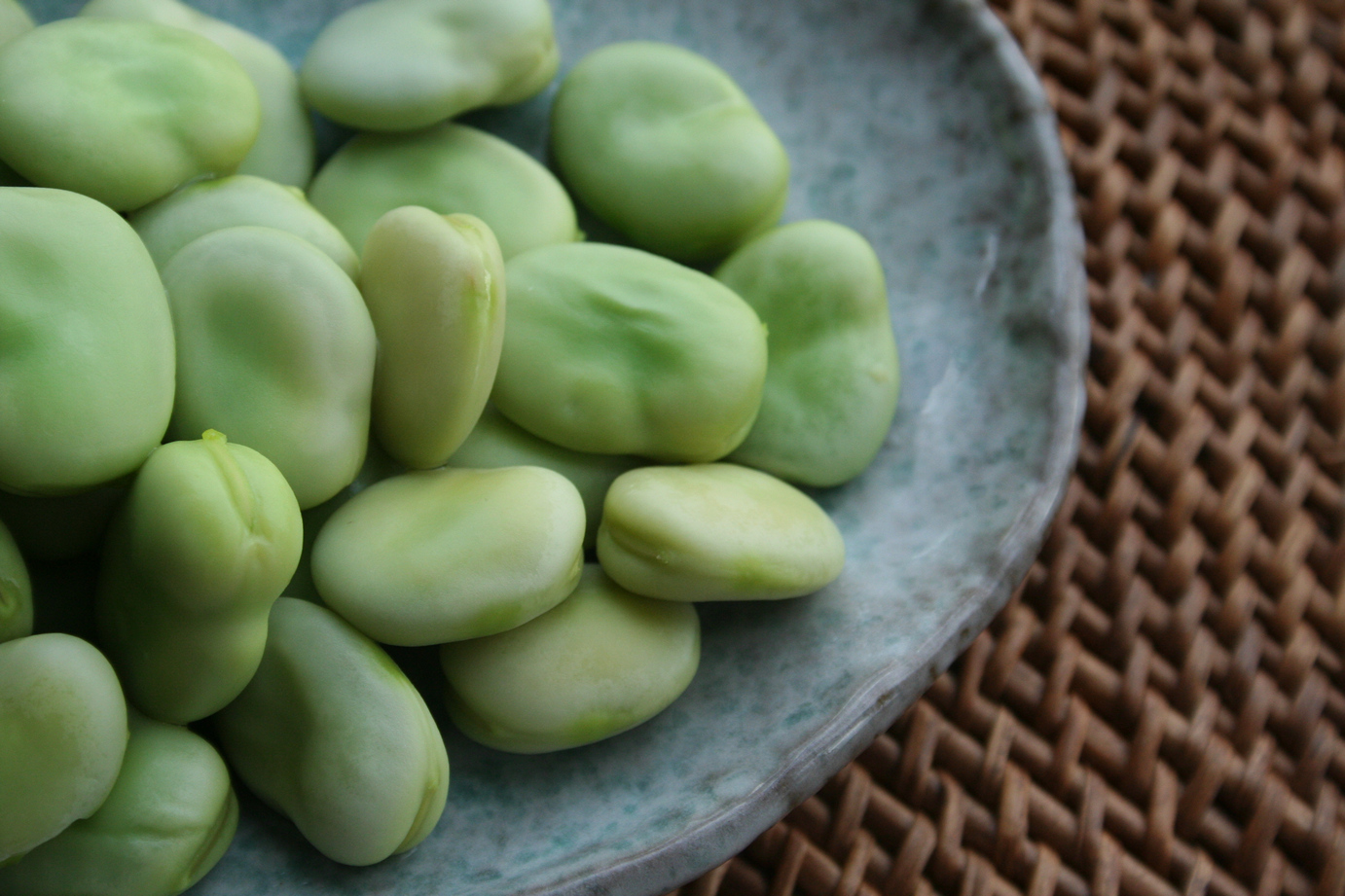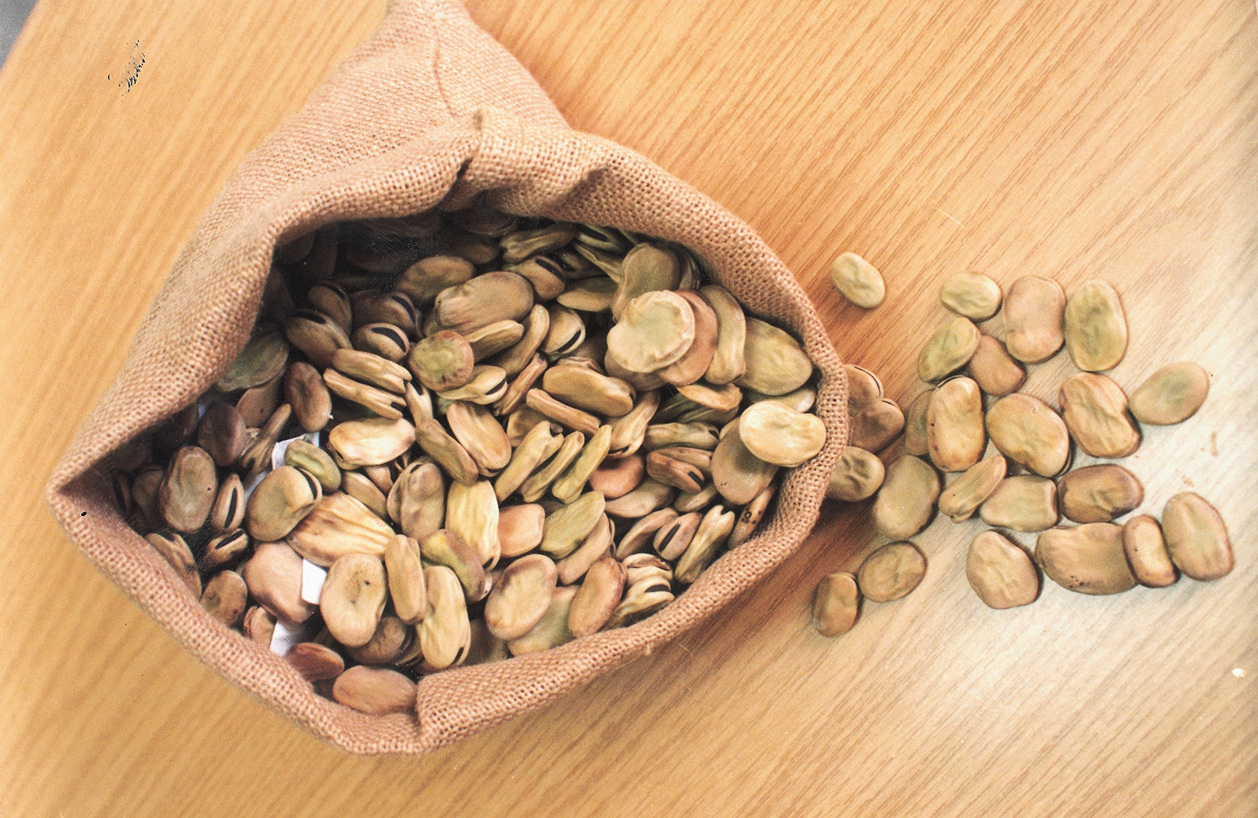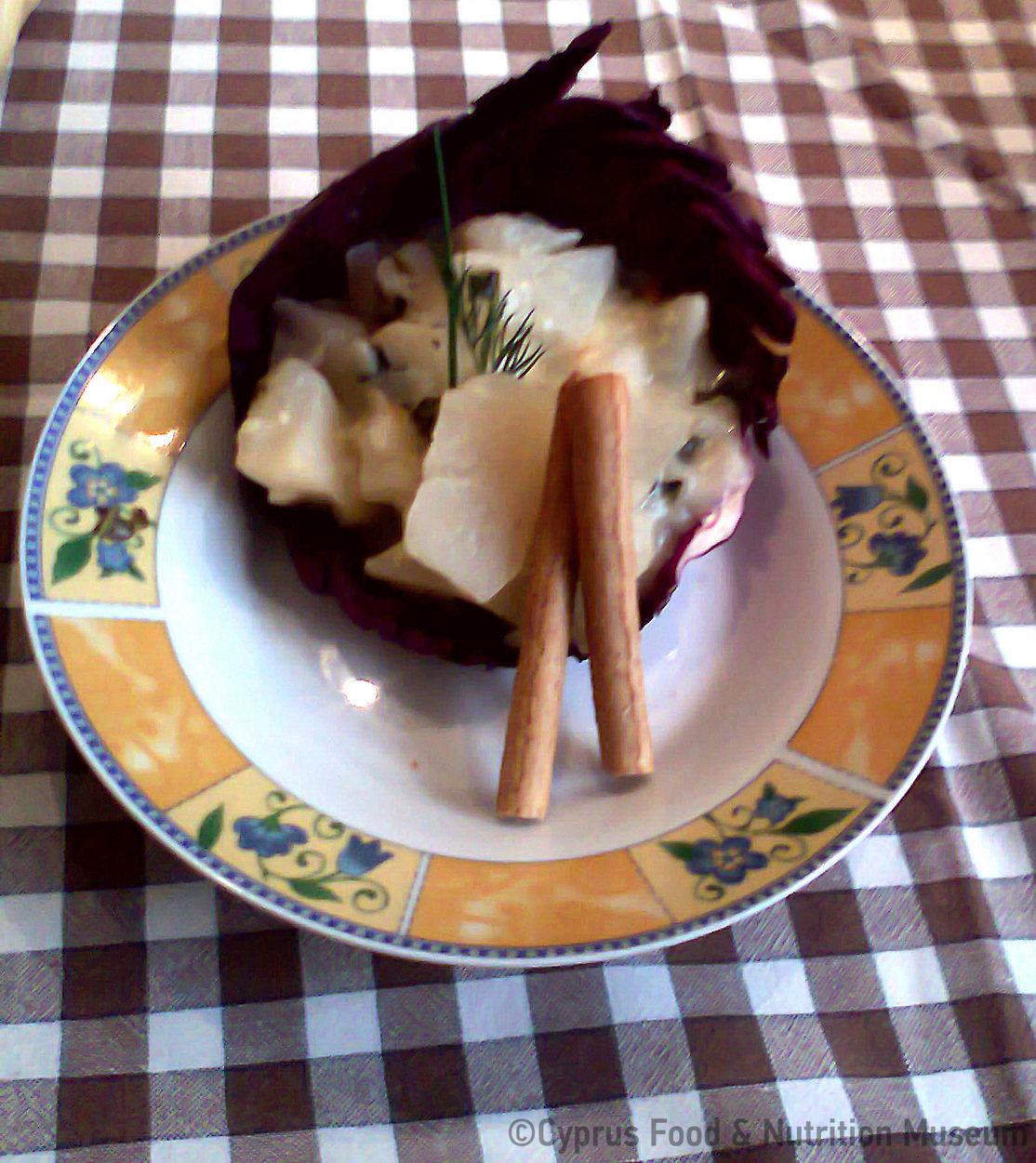A fasting dish with fresh broad beans in batter. It is called "vourvoullada" because the pieces of beans, once cooked in batter, resemble vourvoulades [limpets].
Name - Origin
A dish with broad beans (Kypri 1983 [2003²], entry βουρβουλλάδα,η, 297).
It is called "vourvoulada" because the pieces of broad beans, when cooked in the batter, look like "vourvoulades" (limpets) (Kypri 1983 [2003²], entry βουρβουλλάδα,η, 297).
Vourvoullada was prepared in a pot as follows: They would take fresh broad beans (with their follicles) and cut each follicle into 2-3 pieces, so that each piece would contain one or two beans. They would cook them in a thin batter made of flour with a bit of garlic and fried onion added (Kypri 1983 [2003²], entry βουρβουλλάδα,η, 297).
Functional and symbolic role
It was considered an appetising fasting dish. 'We cooked kouts̆ia vourvouladan' (Kypri 1983 [2003²], entry βουρβουλλάδα,η, 297).
Additional information and bibliography
Kypri Th. D. (ed.) (1983 [2003²]), Materials for the compilation of a historical dictionary of the Cypriot dialect, Part B, Glossary of Xenophon P. Pharmakides, Publications of the Centre for Scientific Research, IX, Nicosia.
Stalo Lazarou, Argyro Xenophontos

